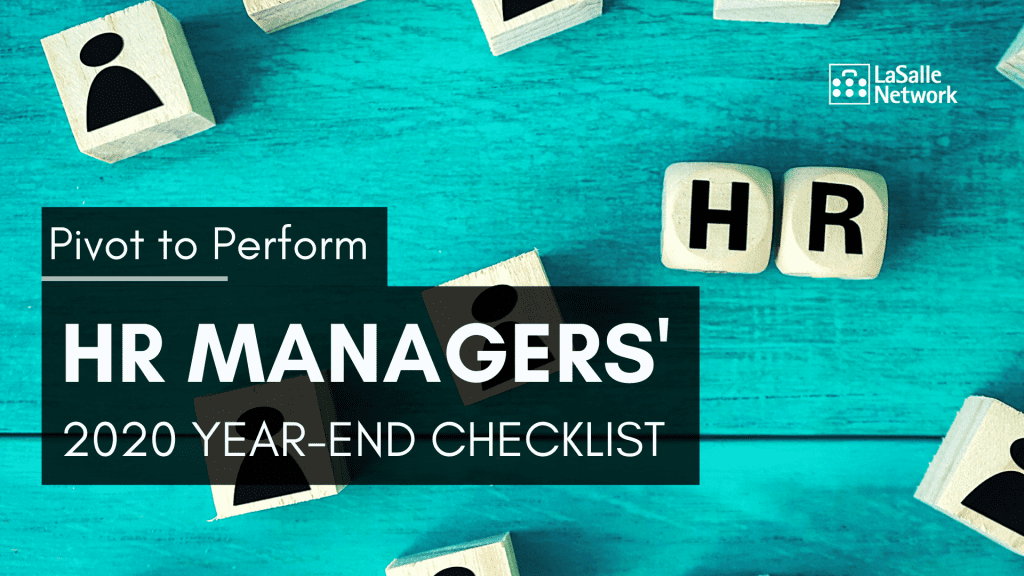The role of an HR professional has been stretched and challenged this year in ways no one was prepared for. Companies relied on HR teams to create plans to keep employees safe and healthy, starting with managing the quick transition to an entirely remote workforce, ensuring employees had what they needed from the emotional support to the technical equipment needed to do their jobs. Soon after the panic of a global pandemic came social upheaval and financial stresses.
While HR teams have been going 1,000MPH just trying to keep up, as we approach 2021, there are six things HR teams should consider doing before year-end to be as best prepared for the year ahead.
Rethink your handbook:
Review company policies and update or adjust if any laws have been passed (or will be passed come January 1) that affect your organization. Consider how your workplace policies have changed when it comes to work-from home or flexible scheduling and update your handbook to reflect these additions. As a pandemic continues to have a global impact, remind employees about the importance of their healthcare benefits, maintaining a relationship with a primary care physician and opportunities like flu shots and telehealth. The end of the year is a good time to consider new initiatives to benefit employees, and potentially implementing those in the new year.
Collect updated staff information:
Between moving, marriages, name changes, etc. it can be difficult to keep up with employee addresses or emergency contacts, so use the end of the year to have all employees provide their most up-to-date personal information. When benefits notices, W-2’s, tax forms are sent, it’s on HR to make sure they’re getting sent to the right person and place. The end of year is also a great time for organizations to revisit their internal filing system. Whether your system relies on electronic filing or paper, make sure you start the year off fresh ensuring that active and inactive employee paperwork is filed correctly.
Conduct an open enrollment audit:
For many in HR, benefits and open enrollment takes up a large part of their time and resources in the last quarter of the year. It’s crunch time to get employees enrolled and make changes to any plans before the deadline. Make sure your hard work doesn’t go to waste by conducting an audit of this year’s open enrollment. Get with your broker to check that the employees who wanted to make changes or needed to enroll were actually signed up and no mistakes were made.
In December, block off time to review “look back” time periods and review any issues or inconsistencies within 1095 ACA reporting prior to their due date in the first quarter of the new year. In the new year, you may consider holding an open enrollment “blind spot” meeting with your team to recap what processes went well during the year-end push, and what could be improved for the year ahead. Rule of thumb – don’t let it this meeting get pushed out any longer than January 31st – it’s best to meet and share ideas when the experience is still fresh in your minds!
Review salaries:
While managers should play a big part in advocating for employee raises, HR professionals should still be reviewing salaries at a high level. Map out employees by tenure and look at what staff is making. If you have a tenured employee who hasn’t had a raise in a few years, be proactive and let their manager know. This way, any salary adjustments can go into effect come the first of the year.
Notify employees of changes or deadlines affecting them:
For instance, if you have employees out on FMLA, they need to be notified of changes to family and medical leave policies that go into effect on January 1. Or, if your organization provides a Flexible Spending Account (FSA), employees that are signed up for it need to be notified of their balance and whether they need to use it by the end of the year or, if it can be rolled over.
Additionally, if your organization encourages employees to use their PTO or has a use it or lose it policy, look at how much PTO people have taken. If someone has been with your company for a few years and has 5 days left, let them know it’s theirs to use. This can go a long way in helping employees feel supported inside and outside of work.
Consider your team:
If managing a team, ask what their main learns were from the year to help you better prepare them in 2020. Also ask what they’d like to accomplish professionally next year. What do they want to learn more about or be trained on? Can you work these into overall team goals as you plan out the year? It’s also important to consider how your team is feeling. As a team that supports the company’s employees, it’s imperative that they feel supported and have the resources to set them up for success, so they can do the same for the organization’s employees.
If you’re looking to add to your team in 2020, find out how we can help by clicking here.




